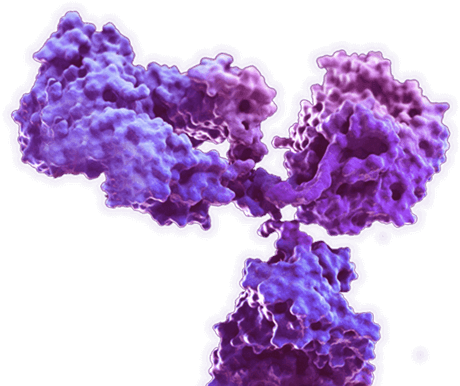AibGenesis™ Mouse Anti-ANK3 Antibody (CBMOAB-2141FYC)
Cat: CBMOAB-2141FYC

Certificate of Analysis Lookup
To download a Certificate of Analysis, please enter a lot number in the search box below. Note: Certificate of Analysis not available for kit components.
Lot Number
To download a Certificate of Analysis, please enter a lot number in the search box below. Note: Certificate of Analysis not available for kit components.
Lot Number
- Product List
- Specifications
- Application Information
- Target
| Sub Cat | Clonality | Species Reactivity | Application | Clone | Conjugate | Size | |
| CBMOAB-2141FYC | Monoclonal | A. thaliana (Arabidopsis thaliana), Cattle (Bos taurus), Marmoset, Rabbit (Oryctolagus cuniculus), Rat (Rattus norvegicus), Rhesus (Macaca mulatta) | WB, ELISA | MO2141FC | 100 µg | ||
| CBMOAB-35657FYA | Monoclonal | Rhesus (Macaca mulatta) | WB, ELISA | MO35657FYA | 100 µg | ||
| MO-AB-01048W | Monoclonal | Rhesus (Macaca mulatta) | WB, ELISA | MO01048W | 100 µg | ||
| MO-AB-07186Y | Monoclonal | Rabbit (Oryctolagus cuniculus) | WB, ELISA | MO07186Y | 100 µg | ||
| MO-AB-07352R | Monoclonal | Cattle (Bos taurus) | WB, ELISA | MO07352R | 100 µg | ||
| MO-AB-24066H | Monoclonal | Rat (Rattus norvegicus) | WB, ELISA | MO24066C | 100 µg | ||
| MO-AB-50847W | Monoclonal | Marmoset | WB, ELISA | MO50847W | 100 µg |
Specifications
| Host species | Mouse (Mus musculus) |
| Species Reactivity | A. thaliana (Arabidopsis thaliana), Cattle (Bos taurus), Marmoset, Rabbit (Oryctolagus cuniculus), Rat (Rattus norvegicus), Rhesus (Macaca mulatta) |
| Clone | MO2141FC |
| Specificity | This antibody binds to Arabidopsis ANK3. |
| Format | Liquid or Lyophilized |
| Storage | Store at 4°C: short-term (1-2weeks) Store at -20°C: long-term and future use |
| Purity | > 90% was determined by SDS-PAGE |
| Purification | Purified with Protein A or G affinity chromatography |
Application Information
| Application | WB, ELISA |
| Application Notes | ELISA: 1:1000-1:3000 Other applications are to be developed. The optimal dilution should be determined by the end user. |
Target
| Introduction | Ankyrins are a family of proteins that are believed to link the integral membrane proteins to the underlying spectrin-actin cytoskeleton and play key roles in activities such as cell motility, activation, proliferation, contact, and the maintenance of specialized membrane domains. Multiple isoforms of ankyrin with different affinities for various target proteins are expressed in a tissue-specific, developmentally regulated manner. Most ankyrins are typically composed of three structural domains: an amino-terminal domain containing multiple ankyrin repeats; a central region with a highly conserved spectrin binding domain; and a carboxy-terminal regulatory domain which is the least conserved and subject to variation. Ankyrin 3 is an immunologically distinct gene product from ankyrins 1 and 2, and was originally found at the axonal initial segment and nodes of Ranvier of neurons in the central and peripheral nervous systems. Multiple transcript variants encoding different isoforms have been found for this gene. (From NCBI) |
| Product Overview | Mouse Anti-Arabidopsis ANK3 Antibody is a mouse antibody against ANK3. It can be used for ANK3 detection in Western Blot, Enzyme-Linked Immunosorbent Assay. |
| Alternative Names | Ankyrin 3; Ankyrin-G; Ankyrin 3, Node Of Ranvier (Ankyrin G); Ankyrin-3, Node Of Ranvier; Ankyrin-3; MRT37; ANK-3 |
| UniProt ID | Q0MVE4 |
| Protein Refseq | The length of the protein is 143 amino acids long. The sequence is show below: DALELLDRENQNVLHVAAKNGKIEVLKFILRCCKDKNKEKLINEEDANGNTPLHLATKNWHPKVVSMLTWDNRVDLKTLNHDGVTALDIAEKNMDSSYTFFERLTWMALISAGAPRGPKLILSTPVTQNSDGGKYKDRVNTLL. |
For Research Use Only | Not For Clinical Use.
Online Inquiry

